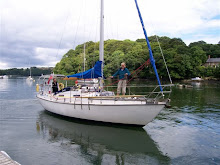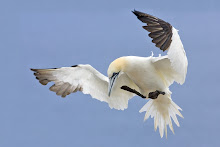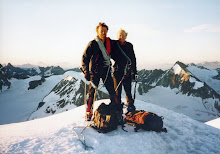The Society Islands – (Tahiti, Moorea,
Huahine, Raiatea, Tahaa & Bora Bora) - proved to
be a fabulous cruising ground. Lots of well sheltered anchorages. some
interesting walking, many distractions and little in the way of an internet
connection. Hence the long delay in publishing a new Blog page.
The Society Islands,
another fantastic
anchorage
Bora Bora,
though given over almost completely to tourism, proved to be great fun. We were
advised that it provided wonderful diving and snorkelling. I had been
disappointed with my diving experience in the Galapagos. Having no diving
qualification, I was limited to a very tame (though expensive) dive with an
instructor; student ratio of one to one.
Pippa and I
therefore decided to sign up for a five day Padi diving course.
It was hard
work, but great fun. We learnt how to cope with all sorts of emergencies
underwater. High on the agenda was running out of air, loosing your goggles and
helping your ‘buddy’ during those and other emergencies. The only real accident
was when Pippa accidently kicked my 2nd stage regulator (mouth piece
to you) out of my mouth.
The diving
locations were all in the sea. (as opposed to using a swimming pool) The water
was, of course, quite warm and stunningly clear. Each day we saw beautiful corals,
exotic fish, and brightly coloured clams. Our last open water dive was just
wonderful. We went outside the reef and as well as the sights I have already
mentioned we came across several Manta Rays. These majestic creatures totally
ignored us. We stopped while they swam gracefully bye, they came beside us,
underneath us, and above us. I also saw a sting ray near the bottom and was
glad that he also ignored me. If that wasn’t enough we later came across
several white tipped sharks. They paid no attention to us, though I kept a
weather eye on them.
One abiding memory of
Tahiti – Hinano beer
We had
planned to go next to Rarotonga in the Southern Cook Islands, but heard through
the yachting grape vine that the harbour was undergoing major reconstruction
and was not at all a pleasant place to visit. Instead we took the 1050 mile
passage to Nuie.
What a
stroke of luck. We would have missed both Nuie and Tonga. It’s one of the
things I like so much about ocean cruising, or sailing at all for that matter.
You can often change your plans at a moment’s notice.
Nuie is the
world’s smallest independent nation and it’s largest coral island. We
thoroughly enjoyed our visit. We took a mooring off the town quay rather than
anchoring, as the water is very deep and the bottom littered with rocks and
other anchor snagging obstructions.
At the Nuie
yacht club we hired two beaten up old bikes (One of my peddles fell to bits
half way round a twelve mile bike ride). We went looking for a series of ‘sea
tracks’ These are coastal sights of special interest. Some are suitable for
swimming & snorkelling. A rough path might lead through a sea cave to a
beautiful lagoon. Others are walks that lead to a spectacular vista. At one sea
track we swam in a lagoon that until fairly recently had been the private
bathing pool of the King of Nuie.
A Sea Track
Last of the great
explorers in Raiatea
The Green Bridge of
Nuie?
At another
we burnt our fingers. Despite a sign warning us of a strong rip current in a pass
through the reef, we thought we knew better. We snorkelled too close to the rip
and found ourselves out of control and heading rapidly for the open sea. The
only way out was to climb quickly onto the sharp skin-tearing coral reef. This
we did and paid the price. Much shaken, though little hurt, we nursed our
wounds and dented egos for the remainder of the day.
Egos dented, but
nothing worse
By Pacific
ocean standards, the 240 mile passage from Nuie to Tonga was quite short. However,
a two and a half day passage such as this one is quite tiring. By the time one
has adjusted to the watch keeping routine of four hours on watch and four hours
off, you have arrived at your destination and need to readjust to normal sleep
patterns.
Tonga consists
of two major islands: Vava’u to the north & Tongatapu to the south. There
is also a central group of small islands, Ha’apai. We made our landfall at
Vava’u and cruised through the Ha’apai archipelago to Tongatapu.
Sula’s crew enjoying
Pacific clarity & colour
Flanders and Swan have a lot to
answer for, Olimakityluchachichichi does not mean
No!
But I couldn’t
get the silly song out of my head. Not that I tried dating any Tongan Maidens Fair.
Nevertheless, we enjoyed our cruise through the islands. The two main towns
were pleasant and we could buy all the provisions we required.
One enterprising
individual impressed me no end. He sold me a hand made Red Ensign for Sula. The
one I was shown was well made, but too big. The solution, he said, was for him
to return home and get his daughter to run up a smaller one. However, he
required a deposit. Very strange, I thought. We had seen him on his boat going
from yacht to yacht, so he knew us.
Somewhat
reluctantly I paid up. He duly returned a couple of hours later and presented
me with the flag and I paid the balance. Never mind that the quality was inferior
to the specimen he had shown us. It dawned on me some time later that he had
probably bought the flag and paid for it with my deposit. Quite an entrepreneur.
Yet another
fantastic anchorage. This one is off Nuie.
One can change
the sailing plan but not the weather. Our time in the tropics was rapidly
coming to an end. We would soon be entering the cyclone season. The thought of
storm force winds and the giant seas that accompany them, reminded me of advice
given to us before our first ocean passage, from Bill, a ship’s captain and
Milford Haven Pilot, “Any boat less than
100ft is a toy”. He told us. “The
Atlantic ocean is not a playground”.
We mustn’t stay
too long in the tropics, but if we go too early it will still be winter in New
Zealand. Timing is everything. The crossing from Tonga to New Zealand is a
tricky one; infamous for unreliable weather and boisterous sea conditions. We
planned for ten to twelve days for the 1200 mile passage. The idea was to
depart just after a gale had passed between the Tasman Sea and New Zealand, then
hope to be across before the next one.
A bit like
crossing the road really.
We were leaving
the land where corrals lie
Ironically, we
suffered from calms more than gales. We had a good wind to blow us clear of
Tonga. Then almost nothing for the next three days. We couldn’t motor any
significant distance, so just had to put up with it. Of course, when the wind
did come, it was stronger than we would have wished, but it seemed churlish to
complain.
The main sail was
fully reefed and just a postage stamp of jib rolled out. It was blowing a force
seven (a yachtsman’s gale) and we regularly exceeded the maximum speed Sula had
been known to sail. Seven and a half knots was recorded. In the wee small hours
(when else) a violent gust tore our roller furling jib in half. The main sail,
not wishing to miss the fun, snapped four of its sliders. (sliders hold the
sail onto the mast). We were not quite half way into our passage. Both damaged
sails were lowered and lashed down as best we could and we continued under
storm jib and trysail. Our speed, thankfully, was reduced to a more comfortable
five knots.
Cape Wiwiki
The blow lasted a
couple more days before we were able to hoist the now repaired main sail and a small jib
that hanks on to the inner fore stay. It isn’t as good as a Genoa but much
better than a storm jib in lighter winds.
Two days of light
airs followed before a fair breeze piped up. Early on the second day I heard
the familiar sound of a citation blowing. Dolphins, I thought. But no. Two
whales, possibly Minkies, had come to inspect Sula.
They circled us
at no more than a boat’s length off. The top of their heads would come to the
surface and they would blow. Then they would gracefully arch their backs and perform
a shallow dive, before surfacing again and repeating the spectacle. Wonderful!
Hoisting the NZ
courtesy flag
The new found
breeze helped us to our landfall of Cape Wiwiki. Passing the cape we entered
the Bay of Islands and had arrived in New Zealand! We so far forgot ourselves
that we congratulated Sula, and gave each other a huge hug.
P.S.
If you want to see what Sula is up to between published Blogs, go to the Post Script & Where next pages on the right
hand side of the Blog. I do my best to keep them reasonably up to date.


























































